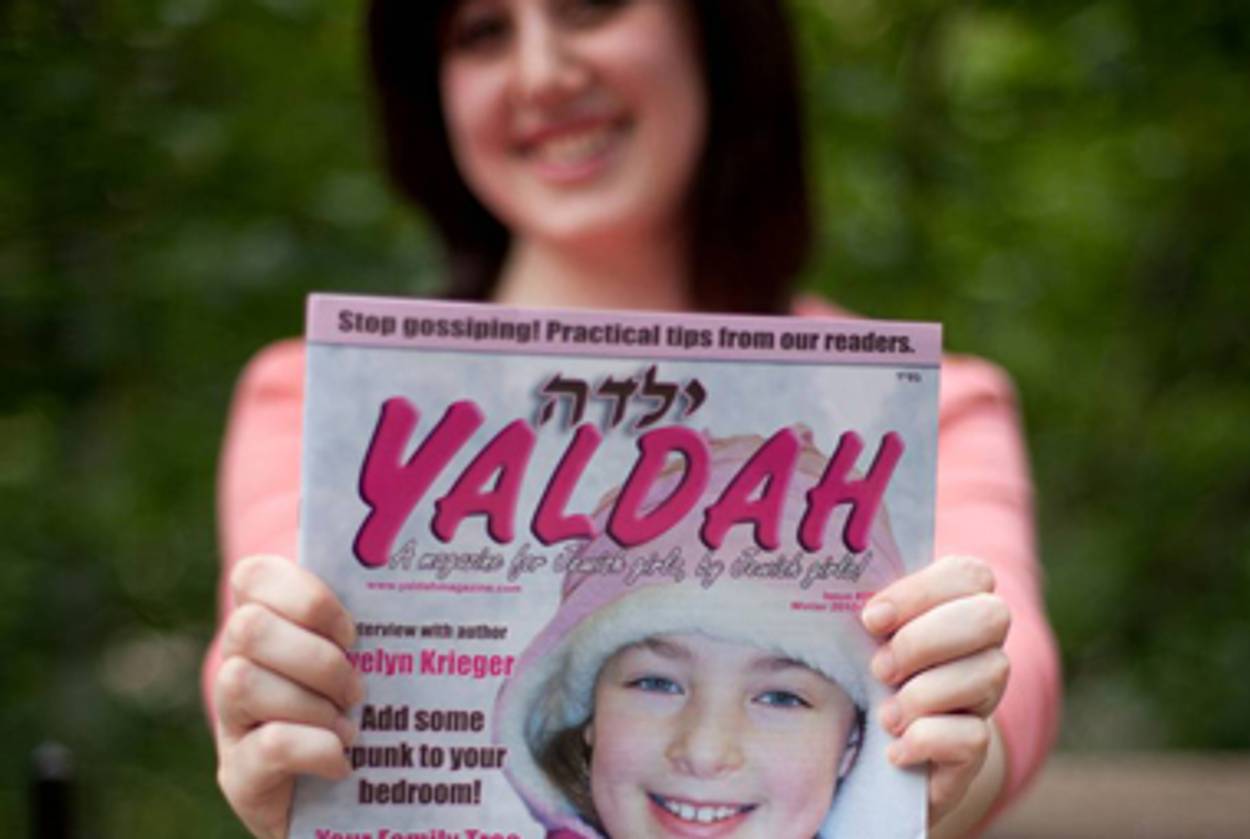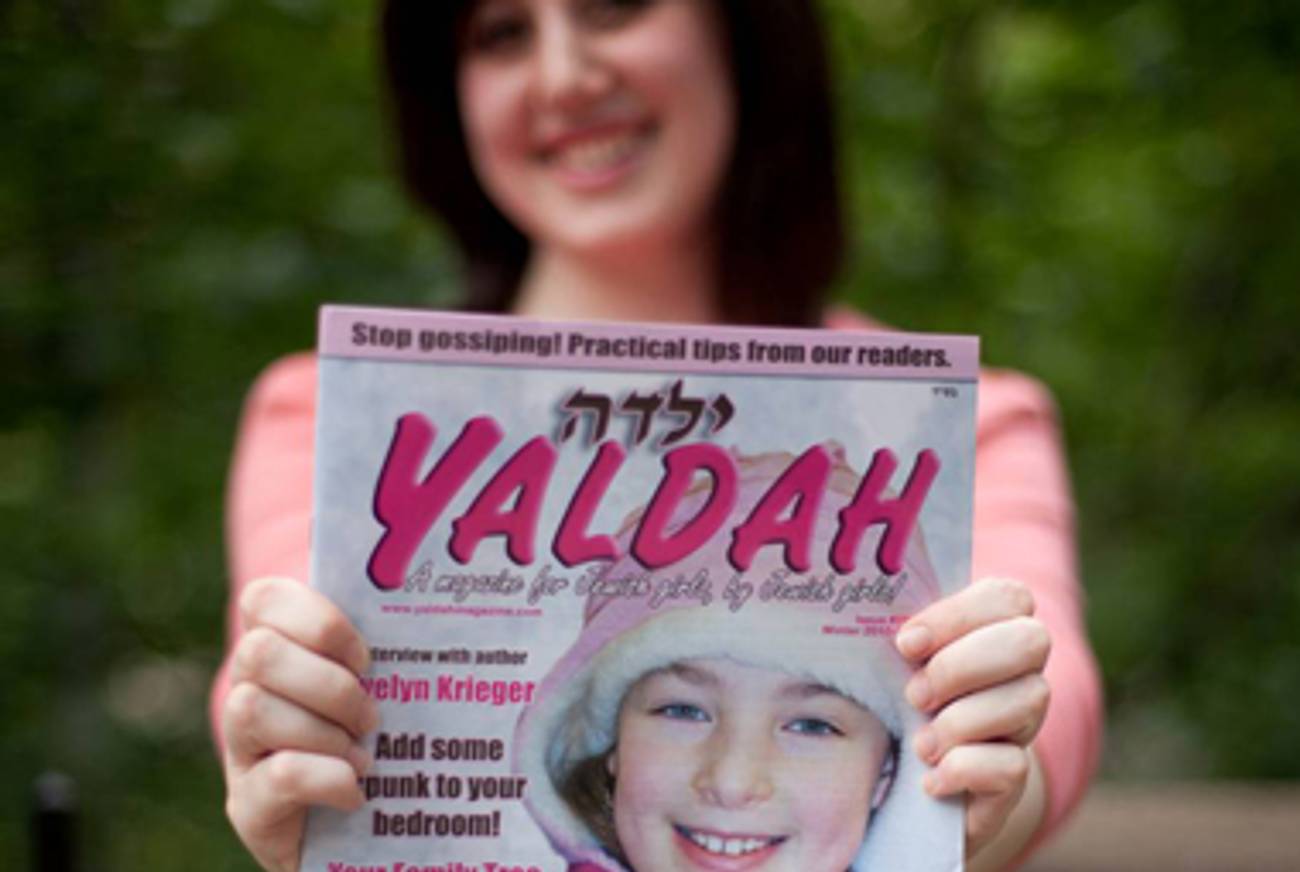Young and Modest
Growing up in an observant home, Leah Caras loved reading magazines but felt that none spoke to her or her fellow Orthodox Jewish girls. So, when she was 13, she started her own: Yaldah.




When Leah Caras was growing up, she pored over the pages of American Girl, a magazine beloved by parents for preserving an image of girlhood free from crass hypersexualization. For Caras, though, the publication fell short in one major way: its lack of Jewish content. “I was looking for something that connected more with being a Jewish girl—the holidays, the values, just my life—and I thought there must be other girls like that,” Caras, now 20, said. (In 2009, the American Girl doll empire, which publishes the magazine, released its first Jewish doll.) “I was surprised that it didn’t exist yet.”
So, Caras decided to take matters into her own hands. In 2004, when she was 13 years old, she founded Yaldah, a glossy quarterly aimed at Orthodox Jewish girls. She wrote 90 percent of the first issue herself, selling ads to her dentist and her school in Brookline, Mass. The first run cost $700 for 150 copies; today the circulation is 2,000 copies, of which 700 go to subscribers. Caras, now a junior at Yeshiva University, convinced a handful of Barnes & Noble stores (in various parts of the Northeast, Ohio, California, Michigan, and Texas) to carry the magazine. “We definitely have room to grow,” she said.
The publication is a cheerful, colorful affair, full of photographs of beaming brunettes with braces, cover lines about staying positive and organizing your bedroom, advice columns about modest attire, and puzzles with clues like “Find the hidden chometz.” Unlike the world of Hannah Montana, Yaldah exists in near-perfect alignment between a parents’ wishes for a daughter and those a girl has for herself.
Yaldah, which means “girl” in Hebrew, is “about getting away from the messages in the media that kids have to grow up so fast,” Caras said. “But we’re also into empowering girls—you can be 13 and publish a magazine—and inspiring them to take responsibilities. It’s a balance, growing up and still retaining your innocence.”
As a publication, Yaldah is a girl-driven affair, with an editorial board of 20 girls in the demographic—the magazine is aimed at girls from 8 to 14 years old—contributing most of the content. Its current ad-sales chief is a 12-year-old South African girl who makes Skype calls to Jewish camps and girls’ clothing sites after school. There’s also an advisory board of rabbis and educators, many of whom are parents of readers. Caras says they have vetoed very little. A rare hint of conflict: In a recent issue, a reader wrote to the advice columnist, chafing at her mother not letting her wear pants. “A Jewish girl is a daughter of a King,” the columnist responded, “she should feel dignified and special.”
Sometimes parents and children seem so united in the pages of the magazine that it’s hard to tell the difference between them. “Before I knew about Yaldah, I was reading a magazine that claimed to support the values important to girls, but I realized that they were just trying to get you to like them so that you would buy their products,” wrote one “Sara Chana, age 11, OR,” in a letter to the most recent issue.
The few ads sprinkled throughout Yaldah are for Jewish bookstores, camps, and schools. There’s a product section in the back labeled “Modest, stylish and affordable,” featuring merchandise from retailers like Target and Kohl’s. The page carries the following diplomatic caveat: “Different families and communities have different standards of tznius. Make sure to check with a parent or Rabbi if you’re not sure an outfit meets your standards.”
Puberty, with its attendant joys and discontents, is delicately avoided. “We might address moodiness or feelings,” said Caras. “We don’t do controversial topics—nothing too deep. Boyfriends we would definitely stay out of.” Drugs and alcohol, too. The winter 2008-2009 issue of Yaldah featured an article on anorexia, however, after someone in the magazine pointed out research showing that their demographic was affected by the disease. The piece focused on the Torah’s view of the body as a dwelling place for the soul, as well as unobjectionable advice on body image. It recommended telling an adult if you suspect a friend has an eating disorder and also advised girls: “Dress in a tznius way. Tznius takes the emphasis off of the body by covering it up, allowing people to focus on their Neshamos.”
“In the Jewish community, especially the Orthodox one, we’re not so into the clothing and boys,” said former editorial board coordinator Nechama Saltzman, now 17. “All that stuff is not so part of our lives.”
Caras recently married and has been juggling the 30 or so hours she spends on the magazine weekly with her studies. But for all her media-mogul tendencies and her interest in empowerment, she is not a feminist, she said. “I definitely think it’s great, empowering girls, and I guess I just don’t fit with what most feminists would fit into. I still very much connect with the sort of traditional roles of being at home, being a mother.”
Irin Carmon is a senior correspondent at New York magazine and co-author of The Life and Times of Ruth Bader Ginsburg. Her Twitter feed is @irin.
Irin Carmon is a senior correspondent at New York magazine and co-author of The Life and Times of Ruth Bader Ginsburg. Her Twitter feed is @irin.